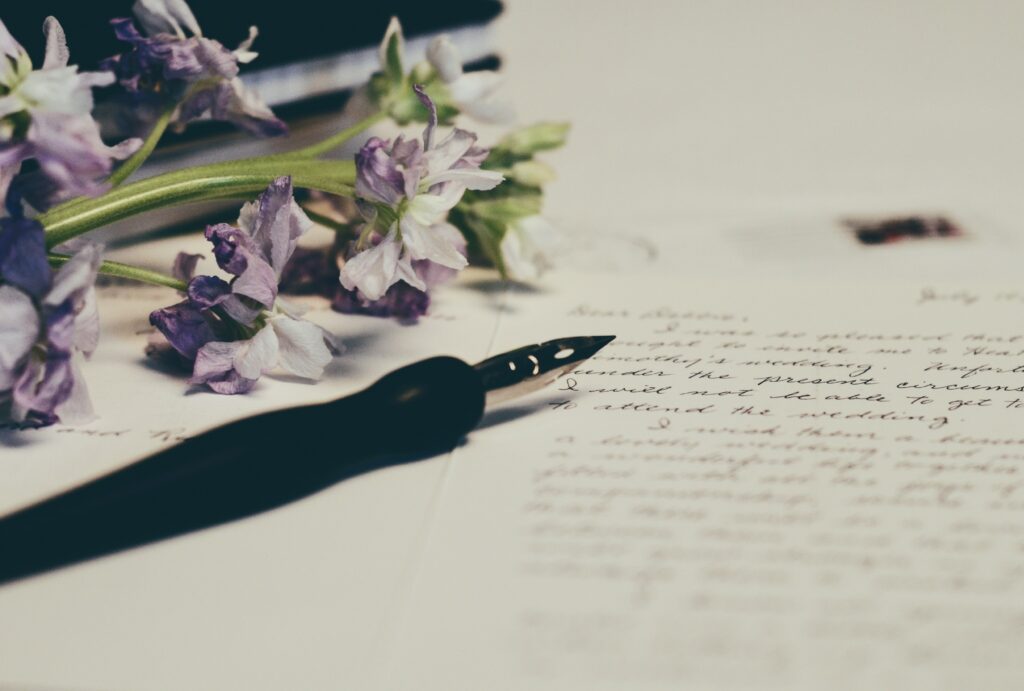In this article, you will discover how the practice of journaling can be a powerful tool for emotional release and overall well-being. Writing has long been recognized as a therapeutic activity, offering a safe and private space to express thoughts and feelings. By putting pen to paper, you can tap into the healing potential of journaling, allowing you to process emotions, gain clarity, and find a sense of calm and self-discovery. Whether you’re new to journaling or a seasoned writer, this article will explore the benefits of this practice and provide practical tips to help you harness its potential for emotional release. Get ready to embark on a transformative journey through the art of writing for wellness.

The Benefits of Journaling for Emotional Release
Journaling is a powerful tool that can bring numerous benefits to your emotional well-being. By putting your thoughts and feelings onto paper, you can reduce stress and anxiety, enhance your emotional regulation skills, gain clarity and perspective, develop self-reflection abilities, and boost self-awareness. In this article, we will explore each of these benefits in detail and show you how to get started with journaling for emotional release.
Reducing Stress and Anxiety
One of the most significant benefits of journaling is its ability to reduce stress and anxiety. Writing down your worries, fears, and concerns helps to release the pent-up emotions that are weighing you down. As you transfer these thoughts from your mind onto paper, you create a sense of relief and create space for more positive emotions to emerge. Journaling provides a safe and private outlet for you to express yourself without judgment, allowing you to unload the stressors that are causing tension in your life.
Improving Emotional Regulation
Emotional regulation is the process of effectively managing and responding to your emotions. Journaling plays a crucial role in improving emotional regulation skills by helping you identify and understand your emotions more deeply. As you regularly write about your feelings and experiences, you become more aware of your emotional patterns and triggers. This heightened awareness gives you the opportunity to develop healthier coping strategies and respond to challenging situations with greater control and balance.
Gaining Clarity and Perspective
Sometimes, our minds can become clouded with thoughts and emotions, making it difficult to gain clarity or see situations from a different perspective. Journaling provides a valuable space for reflection and introspection, helping you gain clarity and a fresh perspective on your experiences. By writing about your thoughts and feelings, you can explore different angles, analyze situations objectively, and gain insights that may have eluded you before. Journaling allows you to step back and reflect on your experiences, helping you find meaning and understanding in challenging circumstances.
Enhancing Self-Reflection
Self-reflection is a key component of personal growth and emotional well-being. Journaling encourages regular self-reflection by providing an outlet for self-exploration and self-expression. By writing about your thoughts, feelings, and experiences, you can delve deeper into your inner world and gain a better understanding of yourself. Journaling allows you to examine your values, beliefs, and goals and helps you align your actions with your authentic self. Through self-reflection, you can make conscious choices and create positive change in your life.
Boosting Self-Awareness
Self-awareness is the foundation of personal growth and emotional intelligence. By practicing journaling, you can cultivate a higher level of self-awareness. As you write about your thoughts, emotions, and experiences, you become more attuned to your inner world. This increased self-awareness helps you recognize patterns, identify triggers, and understand the root causes behind your emotions. By gaining insight into yourself, you can make more informed decisions, cultivate self-compassion, and develop a stronger sense of self.
Getting Started with Journaling
Now that you understand the benefits of journaling, let’s explore how you can get started with this practice for emotional release. By following these steps, you can establish a fulfilling journaling routine that supports your emotional well-being.
Choosing the Right Journal
The first step in starting a journaling practice is choosing the right journal. Consider factors such as size, paper quality, and binding style to find a journal that feels comfortable and inviting to write in. Whether you prefer a sleek leather-bound notebook or a colorful spiral-bound journal, select one that resonates with your personal style and encourages you to write.
Setting a Regular Writing Schedule
Consistency is key when it comes to journaling. Set a regular writing schedule that works for you, whether it’s in the morning, during your lunch break, or before bed. Establishing a routine makes journaling a habit and ensures that you dedicate time for self-reflection and emotional release regularly.
Creating a Safe and Private Space
Finding a safe and private space to journal is essential for allowing yourself to be vulnerable and open during the writing process. Choose a quiet and comfortable spot where you can relax and let your thoughts flow freely. You may consider creating a cozy corner in your home or finding a peaceful outdoor location to immerse yourself in nature while journaling.
Deciding on Writing Tools
The choice of writing tools can greatly impact your journaling experience. Decide whether you prefer to write with pen and paper or use digital journaling platforms. Experiment with different pens, pencils, markers, or even watercolor brushes to find the writing tools that resonate with you and inspire your creativity.
Establishing Writing Rituals
To enhance your journaling experience, consider establishing writing rituals. Before you start writing, you may wish to light a scented candle, play soothing music, or practice a brief meditation to set the mood. These rituals can help you transition into a reflective state of mind and create a more meaningful and rewarding journaling practice.

Journaling Techniques for Emotional Release
Journaling techniques can vary based on personal preference and individual needs. Experiment with different techniques to find ones that resonate with you and support your emotional release journey.
Unfiltered Stream of Consciousness
The unfiltered stream of consciousness technique involves writing without judgment or censorship. Simply let your thoughts flow onto the page without worrying about grammar, spelling, or coherence. This technique allows you to release and process your thoughts and emotions freely, providing a cathartic release and promoting emotional well-being.
Emotional Dumping
Emotional dumping involves writing in detail about your emotions and experiences. Allow yourself to express the intensity and complexity of your feelings, venting and releasing them onto paper. By releasing these emotions, you create space for more positive feelings and gain clarity and perspective.
Letter Writing
Writing letters can be a powerful technique for emotional release. Address the letter to a specific person, whether alive or deceased, and express your emotions and thoughts as if you were speaking directly to them. This technique can help you release and process unresolved emotions, find closure, or express gratitude to someone who has had a significant impact on your life.
Dialogue Journaling
Dialogue journaling involves having a written conversation with yourself or a specific aspect of yourself. Write from different perspectives, using different voices, to explore different sides of a situation or to gain insight into conflicting emotions. Dialogue journaling allows you to gain a deeper understanding of yourself and can lead to increased self-compassion and personal growth.
Artistic Expression
Incorporating artistic expression into your journaling practice can add another layer of emotional release and creativity. Use colors, drawings, collages, or other forms of artistic expression to visually represent your emotions and experiences. Artistic journaling provides a non-verbal way to process emotions and tap into your subconscious mind.
Exploring Emotions and Triggers
In order to effectively release and process emotions, it is important to explore them and identify their triggers. These techniques can help you deepen your understanding of your emotions and their underlying causes.
Identifying and Naming Emotions
Start by identifying and naming your emotions. Pay attention to the physical sensations and thoughts that accompany different emotions, and use a feelings wheel or emotion chart to help expand your emotional vocabulary. By accurately labeling your emotions, you can gain clarity and develop a more comprehensive understanding of how you are feeling.
Tracing Emotional Triggers
Emotional triggers are events, situations, or interactions that elicit strong emotional responses. Take note of the people, places, or activities that trigger intense emotional reactions in your journal. By tracing these triggers, you can uncover patterns, gain insight into your emotional responses, and develop strategies to manage them effectively.
Examining the Root Causes
Journaling provides a platform for deeper introspection and exploration of the root causes behind your emotions. As you write, inquire into the underlying beliefs, experiences, or traumas that may be contributing to your emotional responses. Journaling can help you make connections and gain a better understanding of why certain emotions arise.
Tracking Emotional Patterns
Keeping track of emotional patterns can provide valuable insights into your emotional well-being. Use your journal to regularly record your emotional experiences, noting any recurring themes or patterns. By tracking these patterns, you can identify triggers, create strategies for managing emotions, and track your progress over time.
Recognizing Unresolved Feelings
Unresolved feelings can often linger and impact your emotional well-being. Journaling can help you recognize and process these feelings, providing a sense of closure and release. Take time to explore any unresolved emotions or unfinished business in your journal, allowing yourself to express, validate, and let go of these feelings.

Processing and Releasing Emotions through Writing
Writing can be a powerful tool for processing and releasing specific emotions. By focusing on different emotions, you can develop techniques to effectively release and transform them.
Writing to Release Anger and Frustration
Anger and frustration can be intense and overwhelming emotions. Use your journal as a safe space to express these emotions without judgment or repercussion. Write about what is causing your anger, examine any underlying feelings or triggers, and explore healthy ways to release and manage these emotions.
Expressing Grief and Loss
Grief and loss are deeply personal and complex emotions. Journaling provides an outlet to express the pain, sadness, and confusion that often accompany these experiences. Write about your memories, your relationship with the person you have lost, and the impact their absence has had on your life. Expressing your grief through writing can provide solace, help you find meaning, and support the healing process.
Transforming Fear and Anxiety
Fear and anxiety can be paralyzing and overwhelming emotions. Use your journal to examine and challenge the fears and anxieties that are holding you back. Write about your worries, explore alternative perspectives, and develop coping strategies for managing anxiety. By transforming fear into courage and anxiety into resilience, you can take control of your emotional well-being.
Finding Forgiveness and Letting Go
Forgiveness is a powerful tool for emotional healing and liberation. Use your journal to explore and process any resentments, grievances, or hurts that may be holding you back. Write a letter of forgiveness to yourself or to someone who has wronged you, expressing your emotions and releasing any negative attachments. By forgiving and letting go, you create space for healing and personal growth.
Celebrating and Cultivating Joy
In addition to processing challenging emotions, journaling can also be a space for celebrating and cultivating joy. Take the time to reflect on moments of happiness, gratitude, and achievements in your journal. Write about the people, experiences, or accomplishments that bring you joy and cultivate a positive mindset. By focusing on joy, you can shift your emotional state and foster greater happiness in your life.
Developing a Writing Ritual for Emotional Release
Creating a writing ritual can enhance your journaling practice and maximize its emotional benefits. Consider incorporating these elements into your writing ritual to create a nurturing and mindful environment.
Creating a Relaxing Environment
Find a quiet and tranquil space where you can retreat and dedicate time to journaling. Clear any clutter, dim the lights, or light a candle to create a serene and soothing atmosphere. Designing a relaxing environment helps you feel more centered and focused during your writing practice.
Setting Intentions for Writing
Before you begin journaling, take a moment to set intentions for your writing session. Reflect on what you hope to gain or release through your writing. Whether it’s finding clarity, processing challenging emotions, or fostering self-compassion, setting intentions helps you create a focused and purposeful journaling experience.
Practicing Mindfulness and Grounding
Mindfulness fosters present-moment awareness and connection with your thoughts and emotions. Begin your writing ritual with a brief mindfulness practice, such as deep breathing, meditation, or grounding exercises. This practice helps you connect with yourself and ready your mind for introspection and emotional release.
Using Prompts or Guided Journaling
If you feel stuck or unsure of what to write about, consider using prompts or guided journaling. Prompts can direct your thoughts and inspire new perspectives, while guided journaling provides structured questions or themes to guide your writing. These tools can spark creativity, deepen self-reflection, and offer new avenues for emotional release.
Honoring the Writing Process
Journaling is a personal and evolving practice. Honor the writing process by letting go of expectations and allowing your thoughts and emotions to emerge organically. Embrace the imperfect nature of your writing and trust that the process itself is valuable, regardless of the outcome. Allow yourself to be vulnerable and compassionate towards yourself as you navigate the journey of emotional release.
Overcoming Challenges in Journaling for Emotional Release
While journaling can be a rewarding practice, certain challenges may arise along the way. Here are some common challenges and strategies for overcoming them.
Resistance and Self-Censorship
It’s not uncommon to face resistance or self-censorship when engaging in emotional journaling. You may feel hesitant to confront certain emotions or memories that are painful or uncomfortable. To overcome resistance, remind yourself that the act of acknowledging and expressing your emotions is a crucial step towards healing. Allow yourself to write freely without judgment or self-censorship, trusting in the therapeutic power of writing.
Fear of Judgement or Vulnerability
The fear of judgment or vulnerability can be a significant obstacle to emotional release in journaling. Remember that your journal is a private space for your personal exploration and growth. Validate your experiences and create a sense of safety by reminding yourself that you have complete control over who sees your journal. It’s okay to be vulnerable and authentic with yourself.
Dealing with Overwhelming Emotions
Journaling may sometimes bring up intense or overwhelming emotions. If you find yourself overwhelmed, take breaks, practice self-care, and seek support from a therapist or trusted confidant. Remember to be gentle with yourself and only explore emotions at a pace that feels comfortable for you. You can always return to your journaling practice when you are ready.
Time Management and Commitment
Finding the time and committing to a regular journaling practice can be a challenge with busy schedules. However, prioritizing self-care and emotional well-being is essential. Dedicate small pockets of time each day or week for journaling, even if it’s just a few minutes. Consider journaling as an investment in your emotional health and make it a non-negotiable part of your routine.
Maintaining Consistency
Consistency is key when it comes to journaling for emotional release. However, life can get busy, and maintaining consistency can be challenging. Set realistic expectations and be forgiving of yourself if you miss a day or week. Remember that even sporadic journaling can be beneficial. The key is to return to your practice as soon as possible and remain open to the possibilities that writing can bring.
Combining Journaling with Other Therapeutic Approaches
Journaling can be complementary to other therapeutic approaches, enhancing their effectiveness and deepening your emotional release journey. Consider incorporating these practices alongside your journaling practice.
Journaling in Conjunction with Therapy
Journaling can be a valuable tool to support therapy or counseling. During therapy sessions, take note of insights, realizations, or reflections and explore them further in your journal. Similarly, write about any emotions, challenges, or breakthroughs that arise between therapy sessions. Journaling can help you deepen your therapeutic work and reinforce the progress you make.
Integrating Meditation or Mindfulness
Meditation and mindfulness practices can deepen self-awareness and enhance emotional release. Combine journaling with meditation or mindfulness exercises to ground yourself before writing. Incorporate mindful breathing or body scans to become fully present in the writing process. This integration can foster a deeper connection with your emotions and promote relaxation and clarity.
Using Writing Prompts as Reflection Tools
Writing prompts can be powerful tools for self-reflection and emotional release. Incorporate writing prompts specific to your therapeutic goals or current emotional state into your journaling practice. Prompts can help you explore your feelings, gain insight, and find new perspectives on your experiences. Look for prompts that resonate with you and ignite your curiosity and creativity.
Incorporating Positive Affirmations
Positive affirmations can be a supportive addition to your journaling practice. Write affirmations that counter negative self-talk or limiting beliefs. Use your journal to repeat these affirmations daily, reinforcing positive thoughts and cultivating self-compassion. Affirmations can help rewire your mindset and foster a more positive and empowering emotional state.
Guided Imagery and Visualization
Combine guided imagery or visualization techniques with journaling to deepen your emotional release experience. Visualize yourself in a peaceful and soothing environment and then describe this scene in detail in your journal. Engage your senses to make the visualization more vivid, and explore the emotions that arise during the process. Guided imagery can evoke powerful emotions and tap into your subconscious for deeper healing.
Sharing and Discussing Journal Entries
Journaling is often seen as a personal and private practice, but sharing and discussing journal entries with trusted individuals can provide additional support and growth opportunities.
Journaling as a Personal Practice
First and foremost, journaling is a personal practice. The act of writing down your thoughts and emotions provides a cathartic release and an opportunity for self-reflection. Honor the privacy and intimacy of your journal by treating it as a sacred space for your personal exploration.
The Benefits of Sharing with Trusted Individuals
At times, sharing specific journal entries with trusted individuals can foster connection and provide valuable perspective. Sharing your experiences and emotions with someone who understands and supports you can be validating and comforting. Trusted individuals can offer insights, empathy, and validation, helping you gain new perspectives and uncover blind spots.
Joining a Writing Group or Workshop
Joining a writing group or workshop can be an enriching experience for journaling. Being part of a supportive community of writers allows you to share your work, gain feedback, and learn from others. Writing groups or workshops can provide inspiration, accountability, and camaraderie in your journaling journey.
Online Communities for Journaling Support
If joining a physical writing group is not feasible, consider exploring online communities for journaling support. Online platforms offer virtual spaces where you can connect with like-minded individuals and engage in discussions about journaling and emotional release. These communities can be a valuable source of inspiration, encouragement, and validation.
Receiving Feedback and Validation
When sharing your journal entries, seek feedback and validation from trusted individuals who have a respectful and compassionate perspective. Articulate the type of feedback you are seeking and be open to receiving constructive criticism or alternative viewpoints. Balancing constructive feedback with validation creates a supportive environment for your emotional release journey.
Maintaining a Journaling Routine for Long-Term Emotional Wellbeing
Maintaining a journaling routine is essential for long-term emotional well-being. By adopting these practices, you can ensure that journaling becomes an integral part of your life.
Reflecting on Progress and Growth
Periodically reflect on your journaling journey to assess your progress and growth. Revisit old journal entries to observe how your emotional landscape has evolved over time. Reflecting on your progress allows you to appreciate your achievements, recognize patterns, and identify areas for further growth.
Setting Goals and Intentions
Set goals and intentions for your journaling practice to provide a sense of direction and purpose. Consider what you want to achieve through journaling and how it aligns with your emotional well-being goals. Whether it’s emotional release, personal growth, or cultivating gratitude, setting goals helps you stay focused and motivated.
Adapting Journaling Techniques
As you progress on your emotional release journey, you may find that certain journaling techniques resonate more with you than others. Adapt and experiment with different techniques to cater to your evolving needs. Your journaling practice is dynamic and should evolve with you.
Exploring New Writing Styles
While consistency is important, don’t be afraid to explore new writing styles or techniques to keep your practice fresh and engaging. Experiment with poetry, storytelling, or creative writing exercises to tap into your creativity and expand your emotional release toolbox. Embrace the diversity of writing styles and find what resonates with you.
Continuing the Journey of Emotional Release
Journaling for emotional release is a lifelong journey. Embrace journaling as an ongoing practice that supports your emotional well-being. Continue to explore new emotional landscapes, release and heal unresolved emotions, and cultivate self-awareness through your journaling practice. The journey of emotional release is a path of self-discovery and growth that can bring you lasting emotional well-being.
In conclusion, journaling is a powerful tool for emotional release that offers numerous benefits. By reducing stress and anxiety, improving emotional regulation, gaining clarity and perspective, enhancing self-reflection, and boosting self-awareness, journaling can transform your emotional well-being. By getting started with journaling, exploring various techniques, processing and releasing emotions through writing, developing a writing ritual, and overcoming challenges, you can establish a fulfilling journaling routine that supports your emotional release journey. Combine journaling with other therapeutic approaches, share and discuss journal entries with trusted individuals, and maintain a journaling routine for long-term emotional well-being. Start your journaling practice today and embrace the transformative power of writing for wellness.




